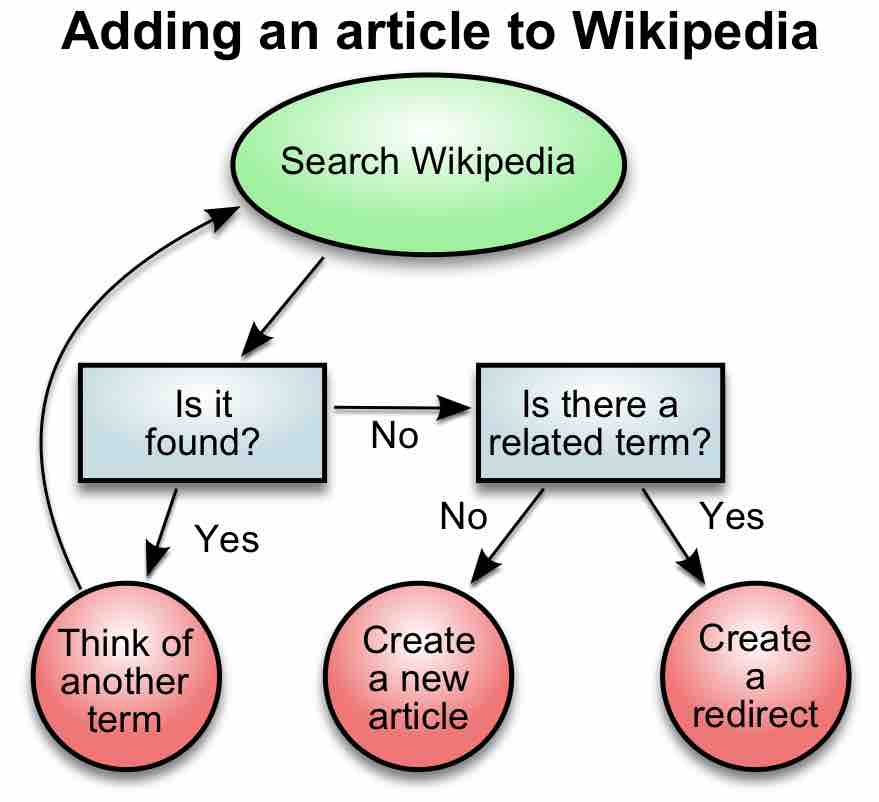Decision Planning
Making a decision without planning is fairly common, but does not often end well. Planning allows for decisions to be made comfortably and in a smart way. Planning also makes decision making much simpler . Any decision will get four benefits out of planning:

Flowchart Diagram
Simplistic decision diagram of when to create Wikipedia articles
- Planning establishes independent goals. It is a conscious and directed series of choices.
- Planning provides a standard of measurement. It is a measurement of whether you are going toward or further away from your goal.
- Planning converts values to action. You think twice about the plan and decide what will help advance your plan best.
- Planning allows for limited resources to be committed in an orderly way. Always govern the use of what is limited to you (e.g., money, time, and so on).
Developing Alternatives
The need to make a decision arises because there are many available alternatives. Hence, the next step after defining the main problem would be to identify the alternatives available for that particular situation.
Gathering data helps decision makers have actual evidence that will aid them in coming up with a solution. Brainstorming helps them develop alternatives. Coming up with more than one solution enables decision makers to see which one can actually work.
While brainstorming, individuals do not have to restrict themselves to thinking about the very obvious options. Instead, they can use their creative skills and come up with alternatives that may look a little irrelevant. This is important because sometimes solutions can come from these out-of-the-box ideas.